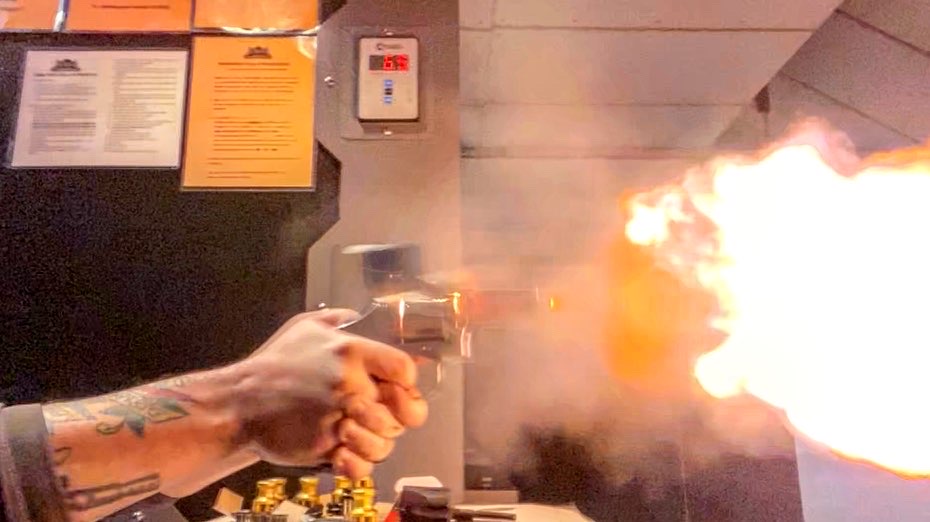One of the questions I get asked frequently about the Modern Fighting Revolver is “how well does that compensator work?” To find out, I took both the 686+ and the 586 L-Comp to a local gun range to find out: do pistol compensators work?
The 586 L-Comp features a single chamber compensator at the end of the barrel. This style of compensator works best with higher chamber pressures, as the comp needs more gas to redirect up in order to do its job. To find out if pistol compensators work, we grabbed a sample of three different rounds that operate at three different chamber pressures. A standard pressure 130 grain 38 Special FMJ, a Speer Gold Dot 135 grain +P JHP, and a 125 grain full house 357 Magnum JHP.
First up is the standard pressure 38 Special round. Remember, comps get more effective the higher pressure the round is, and standard maximum pressure for 38 Special is 17,000 PSI. Compare that to a 9mm, whose maximum chamber pressure is 35,000 PSI. That’s a significant difference, so it wasn’t a surprise that at such a low pressure the compensator on the 586 L-Comp didn’t make much a difference. I noticed a difference behind the gun; the muzzle blast and felt recoil with the comp seems milder, even with 130gr FMJ. Up next was the Speer Gold Dot. A +P round is always going to be hotter than a standard pressure, and this definitely was. You could really see the pistol compensator work for the first time in the video. The recoil isn’t as sharp on the 586 L-Comp, the muzzle flash is less dramatic, and the muzzle doesn’t flip as high.

Last round to test was full pressure 357 Magnum. There is a point of diminishing returns on compensators; while they work better with higher pressure rounds, at a certain point the blast and recoil becomes a problem, and we found that with 357 Magnum. The pistol compensator worked, which you can clearly see in the linked video. However, the 357 Magnum cartridge has so much muzzle blast and flash from a short barrel that it increases the difficulty of shooting past any ballistic benefits. One area where the compensator really worked was reducing muzzle/chamber flash. The non-compensated gun had such a bright muzzle flash that it would light up my entire shooting booth, the 586 L-Comp didn’t.
So, do pistol compensators work? Yes they do. For revolvers, the butter zone appears to be with +P defensive rounds, where the comp provides the benefits of enhanced recoil control, lower muzzle/cylinder flash, and faster return to target without the excessive noise and recoil of a magnum cartridge.



